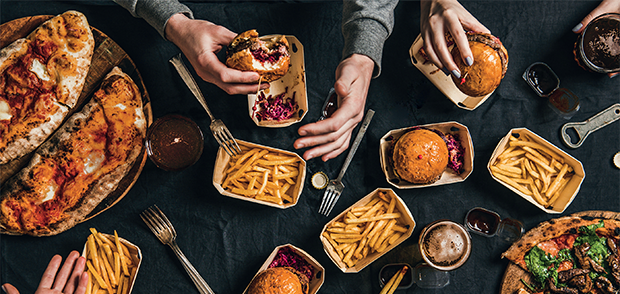
The dark side
Restaurants and pubs will look to recoup their losses this summer. As we know, the pandemic and subsequent economic downturn disproportionately hit the hospitality industry. There are more empty restaurants on high streets and consumer behavior has changed. We are still not eating out as much as pre-covid. The virus is still affecting the attendance of the food and beverage workforce, causing some restaurants and pubs to close their doors due to a lack of staff available to serve.
Last year just over half of UK small businesses pivoted in some way with five percent completely changing their business. For the majority of those businesses, pivots included ways of enabling their customer base to continue to access their products or services from home. The ‘Stay Home – Save Lives’ message during lockdowns meant that if restaurants were to survive, they too had to pivot. Those that pivoted quickly into takeaways and deliveries, generally made it through. Consumers still had money to spend thanks to the furlough scheme at the time. Take away food sales increased dramatically. According to figures, 25% of us were eating takeaways a few times a week in 2020. Takeaway revenue in November 2021 was running at nearly double 2019 levels according to the CGA and Slerp hospitality tracker.
Larger food chains were also affected and many failed. However, some chains watched the success of some small restaurant takeaway pivots. Decision makers at the top of those large food chains started looking at how to tap into the change in consumer behavior. Dark kitchens, which are premises where food is prepared for the sole purpose of takeaway and deliveries, became a more attractive proposition for many of our household-named takeaway chains. Dark kitchens work alongside companies like Deliveroo and UberEats. They provide contactless food delivery. However dark kitchens were not born out of the pandemic. In 2017 Deliveroo launched ‘Editions’ which provided hubs or virtual kitchens to host collections of hand-picked restaurants, all specially designed for delivery. Largely these hubs were found in London although Deliveroo reports it now has 14 sites in the UK and 30 sites worldwide, facilitating 220 kitchens. Wagamama launched its first dark kitchen in 2018 and in 2019, Amazon invested £575million into Deliveroo. The knock-on effect of this investment is that we are beginning to see more fast food preparation and delivery innovations in the UK.
In April 2021 arguably the world’s largest fast food franchise McDonald’s opened its first dark kitchen dedicated solely to UberEats deliveries in Hounslow. McDonald’s is an example of a business that continues to test the market and has tried innovative practices from the beginning. It watches the changing market behaviors and adapts. Indeed, more big name restaurants are pouring money into the delivery aspect of their business. Pizza Hut says they believe the increased demand for delivery is a trend that is here to stay. They have actively recruited delivery drivers and managers as opposed to service staff and are launching 125 new locations over the next three years to serve home delivery. Burger King says that increasing consumer demand towards digital services is showing no sign of slowing and therefore is an area on which they will also continue to focus.
However, there will always be a need for sit down restaurants and how well the delivery and sit down services perform in such close proximity will have a bearing on the roll out of more dark kitchens. Some smaller restaurants who pivoted to take away offerings from their public restricted restaurants during the pandemic are reporting now that there is often a tension between restaurant goers and those coming into collect takeaways. Kitchen staff also report that the two forms of food service are difficult to maintain to high standards. In the long term, offering such different ways of eating side by side may not be sustainable meaning more chains may turn to dark kitchens as the answer.
Another change to consumer behavior to note is our lack of loyalty to one brand or one type of cuisine. With so much more global cuisine on offer, the 25 percent of us eating takeaways a few times a week want different meals each time. We may want Chinese crispy duck one night and Mexican fajitas the next. Branded restaurants cannot accommodate this, however a dark kitchen can. They enable different restaurant’s to set up a small delivery kitchen out of a hub. Therefore, overheads are not affected and there is a wider choice for consumers.
The takeaway industry has been hugely buoyed by the pandemic and has certainly changed consumer behavior. The food and beverage sector at every level will be watching trends and adapting in order to supply those changes in demand. It will be interesting to see how many more restaurant chains adapt to the dark kitchen format and how popular it proves to be amongst consumers. D
For a list of the sources used in this article, please contact the editor.
 Peter Boolkah
Peter Boolkah
Peter Boolkah is an award-winning business coach, podcaster and speaker, helping high-performing business owners in all industries get the results they want. He was a senior executive in operations for McDonald’s for over 20 years.
For further information, please visit: https://boolkah.com